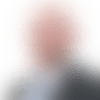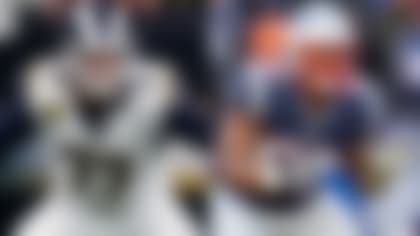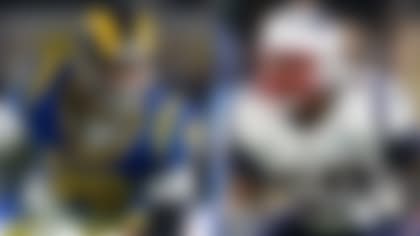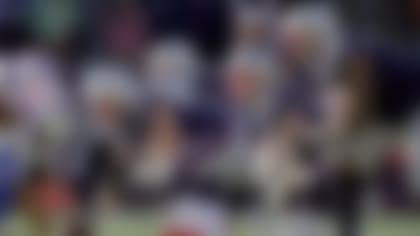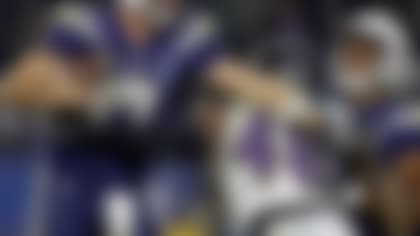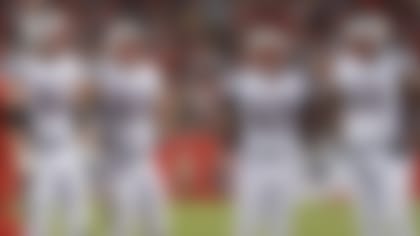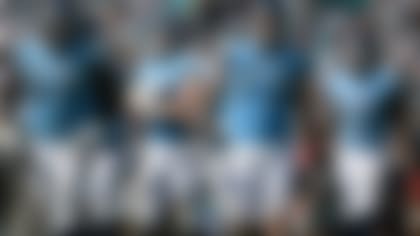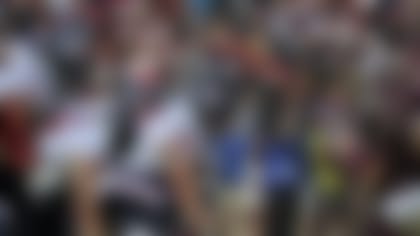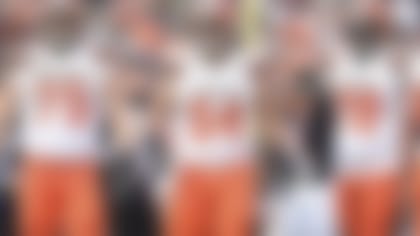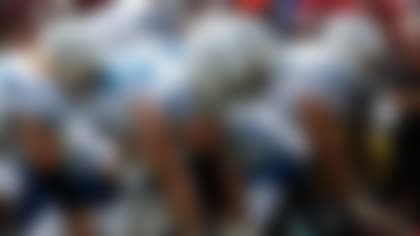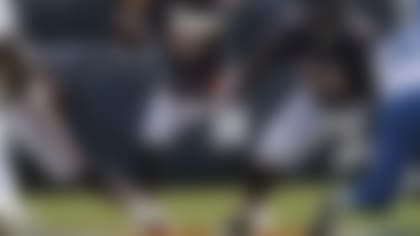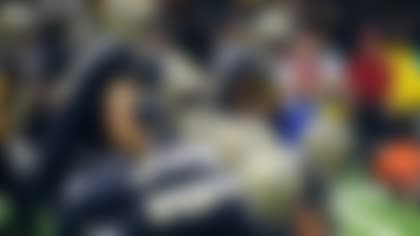It's playoff time, which means we're taking a bit of a different approach for Behind The O Line.
Twenty of the league's teams are now headed for vacation, with just 12 left to play for something. Eight of those squads are getting down and dirty this weekend, leaving us with a small group to choose from. Let's take a look at the last game of Wild Card Weekend, between two eerily similar teams that pit newfound hope against a championship pedigree: Bears vs. Eagles.
We find two squads that are almost mirror images of each other offensively, and for good reason: Each of these teams' head coaches used to serve as offensive coordinator under Andy Reid. Unsurprisingly, each is in the top five of the NFL in shotgun percentage, running 79 percent or more (Philadelphia: 79.3 percent; Chicago: 80.5 percent) of their plays out of some variation of shotgun, per Next Gen Stats.
This should bode well for the big fellas up front, who get a slight benefit of not having to block long enough for their quarterback to complete an elongated (five- or seven-step) dropback. It's also no surprise that each of these units find themselves in the lower half of the league in sacks surrendered (Chicago is tied for eighth with 33; Philadelphia is tied for 15th with 40). But offensive line play isn't just about sacks, which can also double as a quarterback stat, depending on the set of circumstances. It's also about pressures.
Philadelphia has allowed 177 pressures between Carson Wentz and Nick Foles, while Chicago has allowed 117 pressures between Mitchell Trubisky and Chase Daniel. That 60-pressure difference is a pretty considerable gap, and speaks to the continuity Chicago has enjoyed up front while in-season changes have made Philadelphia's offensive line less consistent.
The Eagles have seen injuries to both Lane Johnson and Jason Peters require the insertion of backup swing tackle Halapoulivaati Vaitai at both right and left tackle. Vaitai has also traded series with Peters when healthy intermittently throughout the season. The Eagles also replaced veteran Stefen Wisniewski with younger guard Isaac Seumalo, who has started nine games but missed the last three with a pectoral injury. With these changes came the consistent availability of guard Brandon Brooks, a back-to-back Pro Bowl selection, and center Jason Kelce, who is Pro Bowl caliber but missed out thanks to an NFC roster that includes two excellent centers in Atlanta's Alex Mack and New Orleans' Max Unger. Though Kelce didn't earn a Pro Bowl nod, he's Philadelphia's highest-graded lineman, owning a mark of 84.9, per Pro Football Focus.
Seumalo's status is worth monitoring, though Wisniewski was the better option prior to this season. One could have seen Seumalo's insertion as a bit of a knee-jerk decision based on youth more than production, but it hasn't produced drastic results in one direction or the other, making the eventual starter's value less notable.
What's more important is the play of Peters, who ranks 79th in pass protection this season, per PFF. He has shown signs of his age (especially in his agility and ability to maintain edge blocks) and will face all-world edge rusher Khalil Mack. Expect Philadelphia to employ a running back to help with Mack, or else face the worst possible outcome. The odds aren't in Philadelphia's favor in this area, with the Eagles' best pass protecting running back, Corey Clement, on injured reserve with a knee injury. They're left with Wendell Smallwood and Darren Sproles, with each falling below a grade threshold of 50 in pass protection, per PFF. The responsibility will shift to including tight ends in such situations and likely involve using two tight ends (Dallas Goedert being the second) to maximize Zach Ertz's availability on passing downs, something the Eagles have only done on 35.4 percent of passes, per Next Gen Stats.
The Eagles rank third in the NFL in run blocking with a cumulative grade of 70.6, and 11th in pass blocking at a mark of 78.9. Oddly enough, they're in the bottom third in rushing yards per game, 28th with an average of 98.1 yards per game. This is more due to personnel instability, the Eagles being forced to turn to a committee backfield after losing Jay Ajayi to a season-ending injury.
Conversely, the Bears have largely enjoyed a healthy season from their front five, save for guard Kyle Long, who missed eight games due to a foot injury. Luckily, Chicago saw the return of Long in Week 17, who will break the huddle with his brother Chris on the other side of the line of scrimmage as part of a three-man rotation for Philadelphia.
Philadelphia has been especially effective with its front four in the last month, causing plenty of pressure against a variety of opponents thanks to the stellar play of defensive tackle Fletcher Cox and defensive end Brandon Graham, as well as veteran end Michael Bennett. In terms of PFF grades, Cox owns a premier mark of 92.6, while Graham isn't far behind at 88.7. Philadelphia has generated pressure on 28.1 percent of snaps in which it didn't blitz, the second-highest rate in the NFL, per Next Gen Stats.
They'll present quite a challenge for Chicago's line, which doesn't individually grade out all that well, but plays best as a united, consistent front. The numbers bear that out: Trubisky has only been pressured on 15.4 percent of his dropbacks versus four or fewer pass rushers, the lowest rate among 33 qualifying quarterbacks, and has completed 71.7 percent of attempts versus non-blitzes, third highest in the NFL, per Next Gen Stats.
Blitz rates also don't play into the hands of Philadelphia, which is excellent with Nick Foles taking snaps against the blitz. Foles ranks first in completion percentage, yards per attempt, TD-INT ratio and passer rating against the blitz, per Next Gen Stats. And it's not just Foles, as Pederson has schemed similarly productive situations for Wentz before he went down with a back injury.
It doesn't bode well, though, because Chicago has only blitzed on 21.1 percent of opposing dropbacks this season, the sixth-lowest rate in the NFL, per Next Gen Stats. And even when it does blitz, it's rarely caught off guard, ranking second in TD-INT ratio when blitzing (4-5), third in sack rate (14.3 percent) and opposing passer rating (70.5), fourth in yards per attempt (6.1) and fifth in pressure rate (38.6 percent), per Next Gen Stats. The weakness simply isn't there for Philadelphia to exploit, at least not in the numbers.
Where the game likely will find its turning point is in short targets, as both defenses are effective without blitzing, limiting downfield opportunities. The matchup game will probably determine the winner: Can Philadelphia utilize Darren Sproles and the excellent Ertz, or will it be Chicago's use of Tarik Cohen and a combination of former EaglesTrey Burton and Adam Shaheen? Or might their underused run games end up swinging the game in one direction or the other?
Of course, Mack is a key player to watch, as is fellow Pro Bowl selection Akiem Hicks, who will battle the strength of Philadelphia's line in Brooks and Johnson. It has the feel of two similarly stubborn defenses (with Chicago owning a better secondary) facing offenses that project to be limited, making individual plays that much more important. The aforementioned Mack versus two pass protectors figures to be a key matchup. Chicago's top defense (per PFF) might be the separating group in this game, making it a must-see contest to close Wild Card Weekend.
